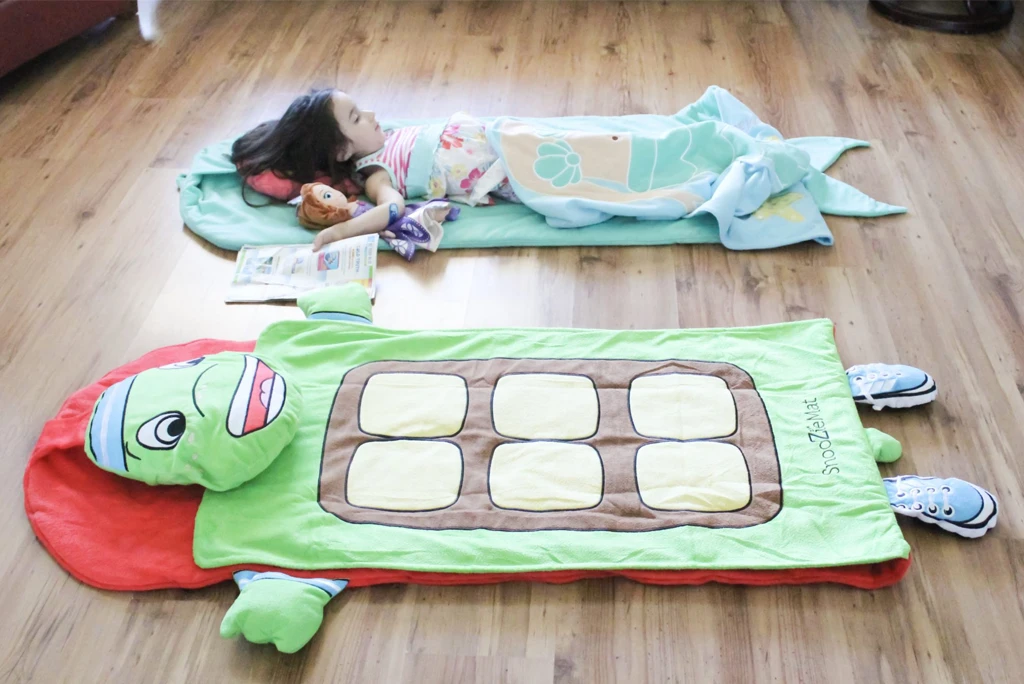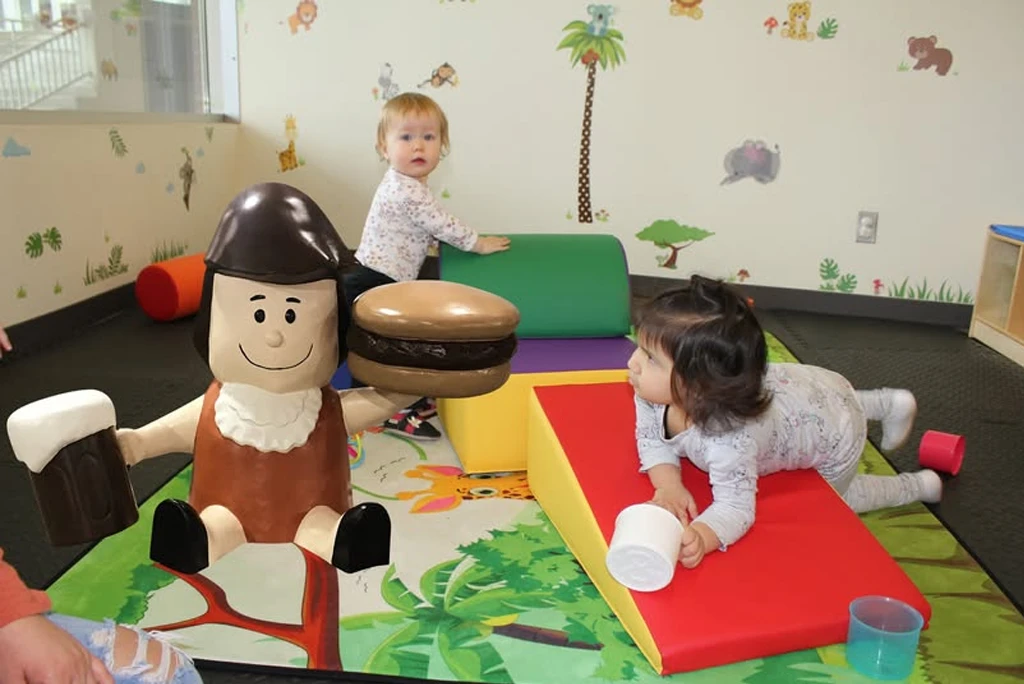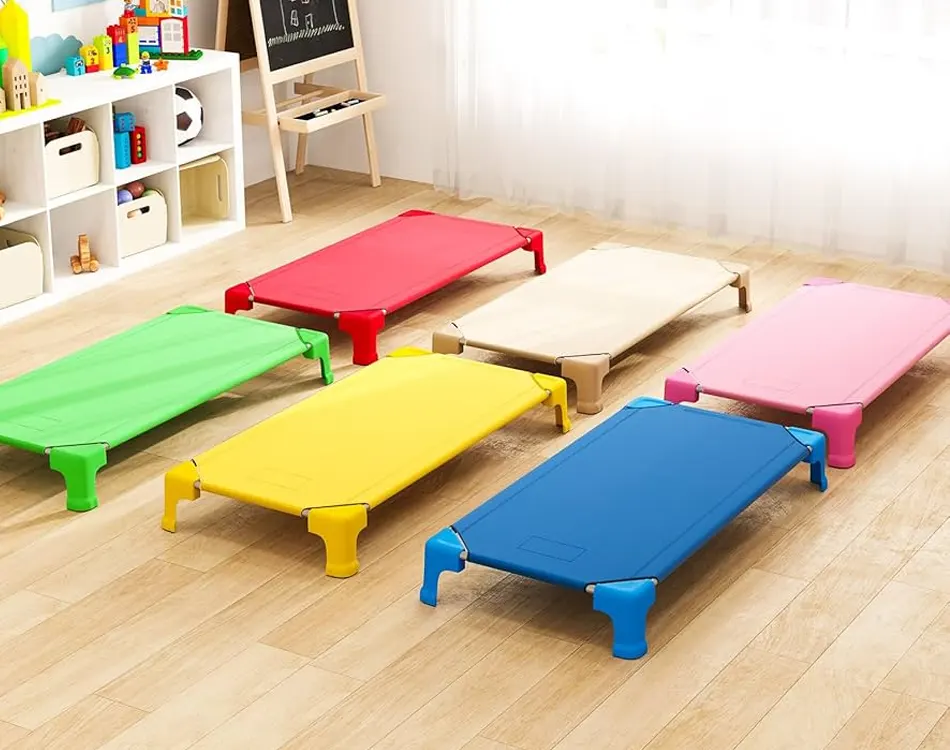Do your preschoolers find it hard to rest during the day? Have you wondered how nap time can be structured so that children feel calm, comfortable, and ready to sleep? Are you looking for a preschool nap time routine that supports both relaxation and healthy development?
Preschool Nap Time is an essential part of early childhood. A regular rest period helps children recharge, supports brain development, and encourages emotional balance. Sleep also strengthens the immune system and aids physical growth, making nap time a vital routine for healthy preschoolers.
That’s why we’ve gathered 15 teacher-tested Preschool Nap Time tips to help create a peaceful, structured routine that gives every child the rest they need.
The Importance of Preschool Nap Time for Healthy Development
Preschool Nap Time plays a vital role in a child’s daily routine. During rest, the brain organizes new information, strengthens memory, and supports learning. Research on napping and cognitive function in preschoolers shows that children who nap regularly often display better concentration, improved problem-solving skills, and greater readiness to participate in activities after waking.

Naps also contribute to emotional well-being. Adequate rest helps children manage frustration, regulate their moods, and interact more positively with others. According to UConn KIDS, consistent nap time supports emotional balance and overall healthy development in preschoolers.
Physical development is another important benefit. While sleeping, the body releases growth-supporting hormones, restores energy, and strengthens the immune system. Even when children do not sleep deeply, a quiet rest period reduces sensory overload and allows the body to recover.
In summary, Preschool Nap Time supports healthy growth, balanced emotions, and effective learning. It is an essential part of early childhood development and should be treated as a priority in a child’s daily schedule.
Common Challenges with Preschool Nap Time
Preschool Nap Time can be difficult to manage because children’s needs and circumstances vary. The challenges usually fall into several distinct categories:
1. Individual energy levels
Some preschoolers are naturally more active and struggle to slow down. Even when the environment is quiet, their high energy makes it difficult to rest.
2. Developmental changes
As children grow, their need for daytime sleep decreases. Older preschoolers may begin transitioning away from naps, which often leads to resistance and restlessness during scheduled rest periods.
3. Environmental distractions
Lighting, temperature, and background noise strongly affect how easily children fall asleep. A room that is too bright, too noisy, or uncomfortable can prevent children from settling.
4. Differences in home routines
Not all children follow the same sleep schedule at home. Some may nap daily, while others rarely do. These differences can make it harder to adapt to a consistent preschool nap schedule.
5. Emotional or social factors
Children may feel anxious being away from their families, or they may be distracted by peers nearby. Emotional needs and social dynamics often interfere with their ability to relax.
By recognizing these distinct challenges, caregivers and parents can take a more targeted approach to supporting Preschool Nap Time and ensuring that children receive the rest they need.
How Long is Naptime in Preschool?
The length of Preschool Nap Time often depends on a child’s age and the policies of the preschool or daycare. In most early childhood programs, nap time lasts between one and two hours. This duration allows younger children to reach deeper stages of sleep while still fitting smoothly into the daily schedule.
For younger preschoolers, especially ages three to four, a longer nap of 90 minutes to two hours is common. Their bodies and brains are still developing rapidly, and they benefit from extended rest periods to support growth and learning.
For older preschoolers, usually closer to kindergarten age, shorter naps of 30 to 60 minutes may be more appropriate. At this stage, some children begin to outgrow daily naps, but they still need quiet rest to recharge and prevent late-day fatigue.

In summary, the recommended nap time in preschool or daycare typically ranges from 60 to 120 minutes, with adjustments based on age and individual needs. The goal is not only sleep but also the opportunity for children to pause, restore energy, and prepare for the rest of the day.
15 Simple Tips for a Stress-Free Preschool Nap Time
Preschool Nap Time becomes much smoother when children have the right structure and environment to help them settle. The following 15 detailed tips can make rest time calmer, more consistent, and more beneficial for young children.
1. Keep a consistent schedule
Children thrive on routine. Scheduling nap time at the same hour each day trains their biological clocks, making it easier for them to relax and fall asleep naturally. Irregular timing, on the other hand, often leads to resistance.
2. Dim the lights
Soft lighting signals the body that it is time to slow down. Using curtains, blinds, or low-watt lamps helps create a restful mood and prepares children for quietness.
3. Reduce background noise
Noise is one of the most common nap disruptors. Playing soft instrumental music or using white-noise machines masks external sounds and creates a soothing rhythm in the room.
4. Offer a wind-down activity
Transition activities such as story reading, gentle stretching, or simple breathing exercises help children move from active play to a calmer state of mind, making the shift into nap time less abrupt.
5. Provide comfort items
Many children feel safer and calmer with a familiar object, such as a blanket, pillow, or soft toy. Allowing comfort items reduces anxiety and makes it easier for them to rest.

6. Arrange the nap space thoughtfully
The placement of mats or beds matters. Leaving enough space between children minimizes distractions, while keeping the layout consistent each day builds a sense of security.
7. Keep the room at a comfortable temperature
Overheating or feeling too cold can disturb rest. A slightly cool, well-ventilated environment with light bedding usually works best for preschoolers.
8. Avoid stimulating play before naps
High-energy games right before nap time make it harder for children to calm down. Quiet choices like puzzles, coloring, or listening to calm music set the right tone.
9. Use visual cues
Charts, picture cards, or even a countdown timer can help children understand when nap time is approaching. Clear signals reduce resistance and make transitions smoother.
10. Separate restless children if needed
Some children struggle more than others to stay quiet. Placing them in less stimulating spots, such as corners of the room, reduces the chance of them disturbing others.

11. Encourage quiet rest even if not sleeping
Not every child will nap every day. Providing a calm alternative, such as lying quietly with a book or simply resting on a mat, still gives the body and mind a chance to recharge.
12. Model calm behavior
Children often mirror the atmosphere around them. Speaking softly, lowering your own movements, and setting a calm tone encourages them to do the same.
13. Offer gentle reassurance
Some children may feel uneasy when asked to nap. A kind word, a reassuring touch, or simply knowing that an adult is nearby can reduce anxiety and promote relaxation.
14. Gradually shorten naps for older children
As preschoolers grow, their need for long naps decreases. Instead of cutting naps abruptly, gradually shorten rest periods so children adjust without becoming overtired.
15. Communicate with families
Consistency between home and preschool makes nap routines easier. Sharing observations about sleep patterns helps families maintain similar routines at home, reducing confusion for the child.
Taken together, these 15 tips provide a practical framework for Preschool Nap Time, helping children build positive sleep habits and giving them the chance to wake up refreshed and ready to learn.
Looking For Durable Daycare Cots?
Give children the comfort and support they need during Preschool Nap Time with our high-quality tempat tidur bayi untuk penitipan anak. Designed for safety, durability, and easy storage, our cots make rest time simpler and more effective. Perfect for preschools, daycares, and childcare centers, they’re built to last and provide peace of mind for caregivers.
 Shop Daycare Cots
Shop Daycare Cots
How to Handle Non-Nappers During Nap Time
Not every child will fall asleep during Preschool Nap Time, and that is perfectly normal. As children grow, their individual sleep needs begin to vary, and some may gradually outgrow daily naps earlier than others. For these children, forcing sleep can lead to frustration, while offering appropriate alternatives helps them still benefit from a restful break.
One effective approach is to introduce quiet activities that keep non-nappers calm without disturbing others. Simple options such as looking at picture books, listening to soft music through headphones, or working on quiet puzzles allow children to rest their bodies while staying engaged. The key is to create an atmosphere that respects both sleepers and non-sleepers.
It is also helpful to provide a designated quiet zone for children who do not nap. This space can be slightly separate from the main nap area, reducing the chance of distraction for others. Soft seating, dim lighting, and limited materials make it clear that this is still a rest period, even if sleep does not occur.
Finally, clear communication with families is important. Parents should be aware of how their child responds during nap time, and together with caregivers, they can decide on the best way to balance rest at school with sleep routines at home. This consistency supports healthy habits and reduces stress for children who no longer require regular naps.
Kesimpulan
Preschool Nap Time is more than a pause in the daily schedule; it is a critical part of early childhood development. Regular rest supports children’s physical growth, strengthens memory, and improves emotional balance. Whether through full sleep or quiet rest, children benefit from the opportunity to recharge and return to activities with renewed energy.
Challenges such as restlessness, environmental distractions, or varying sleep needs are common, but they can be managed with thoughtful strategies. A consistent routine, a calm environment, and supportive tools such as age-appropriate cots help create positive nap experiences for children.
When Preschool Nap Time is approached with patience and structure, it transforms from a potential struggle into a valuable routine that promotes learning, health, and overall well-being. By prioritizing restful afternoons, caregivers and families give children the foundation for brighter moods, stronger focus, and happier days.




